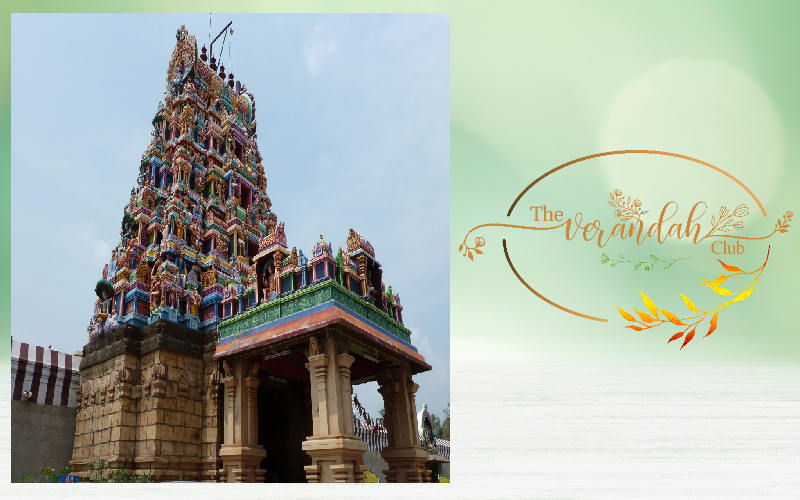
The Emerald village, Perur is nestled on the banks of river Noyyal, the central tributary of Kaveri in Tami Nadu. This heritage village has been the home to scholars well versed in both Tamil and Sanskrit. It is Kachiyappa Munivar who composed the ‘Perur Puranam’ during the 17th century. The 2000 years old, Perur Pateeswarar temple is located between the two Hanumans installed by saint, Vyasa Raja – The Rajaguru of Sri Krishnadeva Raya. This village is also known as Mukti Sthalam, a place where the soul attains liberation. Pateeswarar’s consort, Pachainayagi / Maragadhaambigai is found in a separate shrine within the premises of the lovely temple.
The sanctum was created during the times of Karikala Chola. Several rulers and devotees alike added to the temple infrastructure. The Pallavas had begun building spectacular temples from the times of the emperor, Simhavishnu (575 -600 CE). This activity was continued by the Cholas, Pandiyas, the rulers of Vijayanagar, until the last Nayak queen of Madurai. The reign of these rulers spanned a period of 1161 years i.e., 575 to 1736 CE. Therefore, it could be safely claimed that most of the temple developments took place during these 1000 and more years.
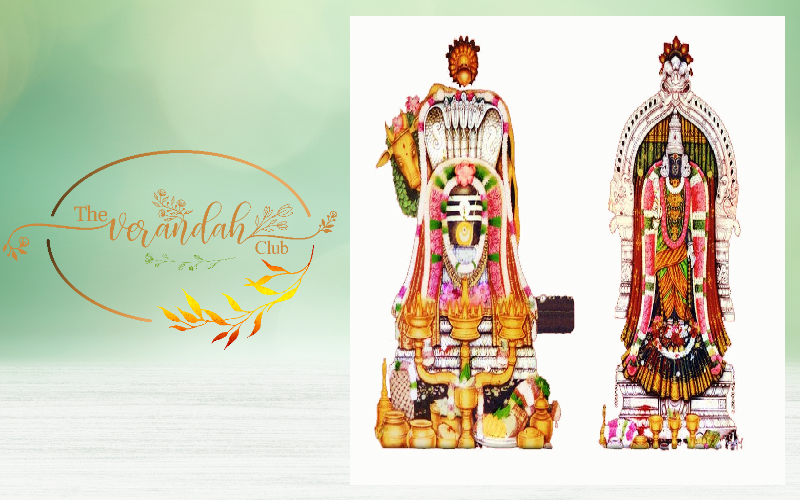
Perur happens to be one of the four Chidambaram-s and it is known as Melai Chidambaram. It acquired this epithet long ago, due to a historical event. The Gunguru or the Salangai (metallic bells strung together and worn by classical Indian dancers) flew from the feet of Lord Nataraja while he was dancing and fell on the banks of river Noyyal at Perur. This made it the reason for calling the village as Melai Chidambaram.
The old Nataraja icon in the Kanaka Sabhai (literally refers to a Golden Hall) of Perur stands as a testimony to this ancient tale. His matted locks are found frozen on his shoulders for he has just paused for a minute while dancing. His consort, Sivakami is found beside him. Both reside in this shrine which has nine windows, signifying the nine openings in the human body. The four pillars within the sanctum are said to be representing the four Vedas and they are kind of tilt towards the Lord. No wonder, Lord Shiva is also known as Vedanayagan or the lord of the Vedas.
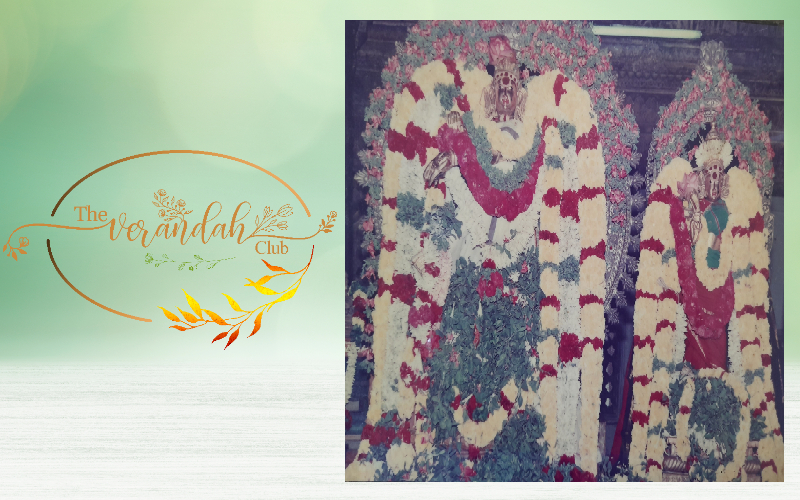
This sanctum is endowed with a nice sandalwood panel and can be accessed by five steps which are known as Panchaakshara Padigal. One can notice the statues of Patti Muni and Go Muni at this point. The stone-pan used for making sandal wood paste for the Lord is located nearby. A temple employee rubs pieces of sandalwood on the stone-pan for the purpose of making sandalwood paste.
The Kanaka Sabhai at Perur was constructed at Perur by Alagadri Nayak, the brother of Thirumalai Nayak of Madurai. It took 34 years during the 17th century and the stones were brought via Vadavalli. Alagadri Nayak had a mansion in the Vadavalli area.
The Kanaka Sabhai is chiseled with stone chains and parrots embedded on inverted lotus flowers on its ceiling. A total of 36 pillars measuring a height of 16 feet each support the entire structure. Among them 8 of these pillars are known for their sculptural splendor. The Sthapathi or ‘master sculptor’ must have put his heart and soul into the making of these pillars.
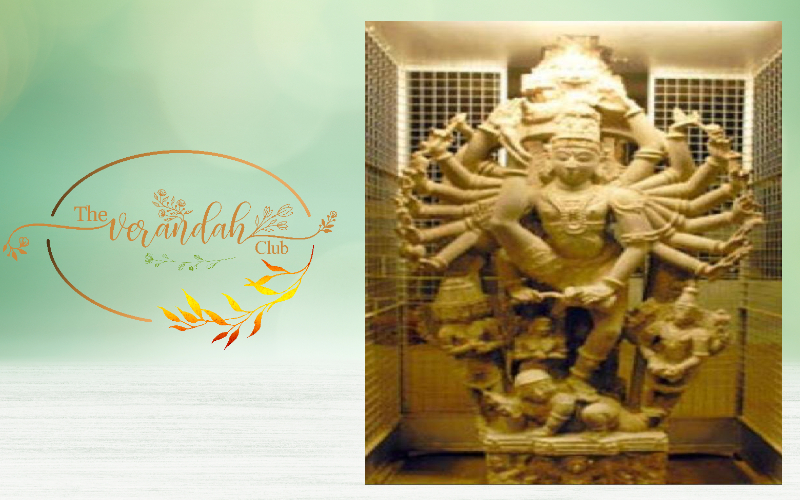
The eight monolithic pillars have been sculpted into 8 deities connected with Lord Shiva. We can see the flaring nostrils, the fangs, the muscles, and the nails in detail in each one of these sculptures. The taut, muscles on the stomach, the ornaments, the eyes, and eyebrows add to the beauty. The entire hall is a sight to behold. A lot of time must have gone into sculpting the icons of Bikshadanar, Gajasamhaaramoorthy, Agora Veerabhadrar, Agni Veerabhadhrar, Aalangaatu Kali, Urdhva Thanadavar, Nritha Ganapathi, and Arumugan, Subramanyam. These icons are based on stories connected with Lord Shiva and these stories are found in the Puranas. The story of Bikshadanar is linked to the Dhaarukavanam incident while Aalangaatu Kali and Urdhva Thanadavar find a place in the tale wherein both of them participate in a dance contest. Of course, the stories connected with Agni Veerabhadhrar, Agora Veerabhadrar, and Gajasamahaaramoorthy are well known.
A ritual bath is given to Lod Nataraja and Sivakaami during the aarudra darshan and thousands would throng the shrine in order to have a vision of their Lordship. Lord Nataraja and his consort Sivakami would be decked with the best of jewelry on this sacred occasion. It is important to recall a small incident connected with the great devotee, Sivakavimani C. K. Subramania Mudaliar. He happens to be the only son of Vidvaan Kandaswamy Mudaliar who lived in the Vysial street in Coimbatore. Both, the father and the son, were deeply devoted to Lord Shiva in Perur.
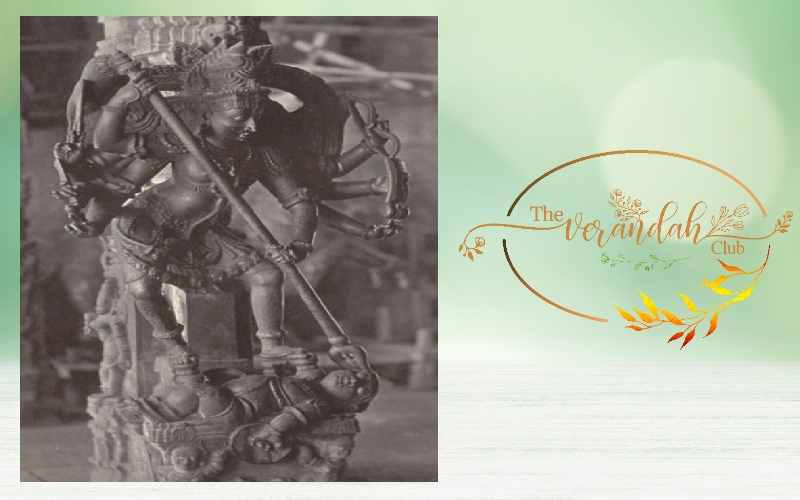
Long ago, it was around the third decade of the twentieth century that a Nagarathaar merchant came with a gold hair ornament costing ₹ 700 to the residence of Subramania Mudaliar. The devotee wanted to get it for Goddess Sivakami at Perur. He took it to the jeweler, P. A. Raju Chettiar who lived nearby. This jeweler approved the quality of the ornament and also contributed towards its purchase. Subramania Mudaliar donated the ornament to the deity at Perur. This story is connected with the Perur Pateeswarar temple and the Kanaka Sabhai continues to add devotion and piety amongst the devotees of Lord Shiva.
NEXT ARTICLE